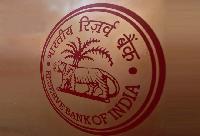
One of the leading developments in monetary policy during the last decade was the emergence of repo as the powerful instrument of monetary policy. Repo has its origin in Liquidity Adjustment Facility (LAF). The LAF which was launched by the RBI in 2000; has two legs- the repo that aims to inject liquidity into the banking system and the reverse repo that is used to absorb liquidity from the banking system.
What is LAF?
As mentioned, LAF is a liquidity stabilizing platform introduced by the RBI to facilitate liquidity in the economy through the instruments of repo and reverse repo. Banks can borrow from the RBI through the repo window by submitting eligible securities as collateral while getting an overnight loan at the same time paying an interest rate called repo rate.
Repo
Technically, repo (Repurchasing Option) is a contract in which banks gives eligible securities such as Treasury Bills to the RBI while availing overnight loans with a commitment to buy them back. The interest rate charged on repo transactions is called repo rate.
Following components are there under a repo transaction between the RBI and a commercial bank:
- Bank gives eligible securities (securities identified by the RBI{like government bonds} and at the same time which are above the SLR limit).
- RBI gives one day/overnight loan to the bank
- RBI charges an interest rate called repo rate from the bank
- Banks repays the loan after one day and repurchases the security it has given as collateral.
Reverse repo
On the other hand, reverse repo is an opposite contract under which banks can park their excess cash with the RBI by availing a rate of interest which is called reverse repo rate. Here, when the banks have excess money for the coming days, they can give it as a loan to the RBI. But here, the RBI will not give any securities (like Treasury Bills) to them.
Following are the components of the reverse repo transaction:
- Bank parks its excess cash with the RBI for one day.
- Such money will be considered as a one day loan by the bank to the RBI.
- RBI gives an interest rate called reverse repo rate to the bank
Of these two tools (repo rate and reverse repo rate), repo rate is of prime importance because once repo rate is changed by the RBI, reverse repo also automatically changes by equal percentages in the same direction.
Repo and reverse repo facilities are available from Monday to Friday. Requests for repo and reverse repo can be submitted in the morning.
Importance of repo in monetary policy
Before the launch of repo, the most important monetary policy instrument used to counter inflation was the CRR.
After a few years of its introduction, repo has emerged as the most effective instrument to fight inflation sidelining conventional instruments like the CRR. Later with the introduction of inflation targeting, RBI has made repo as ‘the policy rate’. This means that it is the only policy instrument used to fight inflation or target inflation and thus to ensure price stability.
Following factors make the repo rate important:
- The repo rate now acts as ‘the policy rate’ for the RBI that signals short term interest rate in the economy.
- As per the new inflation targeting monetary policy framework there is only one objective-price stability, one target- inflation and one instrument – repo rate.
- Over the time, the banking system’s borrowing through the repo route has increased and now large volume of borrowing is made by the banks to meet their liquidity requirements. Similarly, the RBI has introduced several other arrangements like variable rate repo, marginal standing facility etc to inject money into the banking system. Remember, when the borrowing through the repo route rises, the repo rate becomes very applicable adding to its capacity to influence the interest rate of the banking system. All these trends have added strength to repo rate as a monetary policy instrument.
An important factor that has made repo more powerful is the continuous reliance on repo loans by the banks from the RBI.
The role of LAF as a supplier of ready liquidity has expanded as repo borrowings by banks from RBI increased. Turnover through the repo window became much higher than the call money market turnover. Commercial banks are using repo more frequently and in more volume compared to call money. When the dependence on LAF repo for commercial banks to get liquidity increases, the underlying interest rate of repo rate becomes very binding for commercial banks. Hence, when the repo rate is increased by the RBI, banks are tempted to increase their individual lending and deposit rates as well.
So, repo rate is the interest rate anchor (short- term) and is frequently used by the central bank to counter inflation. Whenever the RBI changes the repo rate, banks also have to change their interest rate in the same fashion to make the repo signal effective. Recently, the RBI has introduced Marginal Cost Lending Rate policy in fixing the base rate by banks. Here, banks have to change their interest rate monthly and also by considering the repo rate.
*********









